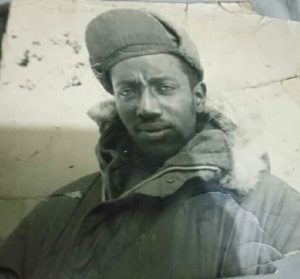
Tesfaye WoldeTsadiq
Lieutenant Colonel Tesfaye WoldeTsadiq was born from his father WoldTsadiq Woldgebreal and his mother Terunish Woldgebreal in January 03,1929 in Addis Ababa. He was enrolled in the former Teferi Mekonnen School, now Entoto Technical and vocational school.he was sincerely and obedient throughout his life. He has seven children and one grandchildren.
Service Records
Because of his willingness to serve in the military he went to former Imperial guard candidate school on April 1946 and joined the Imperial guard as a candidate. On April 1946 he was appointed as an officer. On September 1949 he completed his schooling and graduated with the rank of Capitan. On July 1950, he earned the title of lieutenant colonel. In service, he was sent to Korea as a member of the first Kagnew Battalion.
During his tenure, the first Battalion was awarded the pioneer medal of honor for his dedicated service in various capacities in Korea. In addition, because of his duties well, sincerely and obedient service he was awarded one palm Giorgis military medal, HaileSelassie I honor star medal, the 15 years service medal etc. Surprisingly, while he was working in a former Imperial guard announcement the emperor was rewarded for his outstanding performance. Until his retirement he was worked in the ministry of health as a photographer. However, he was died in September 1991 at the age of 62.
Korean War - Key Events
September 12, 1950
North Korean troops reach their farthest point of advance. Although thousands of UN troops have arrived to reinforce South Korea, months of fighting have reduced the area under their control to a 5,000-square-mile rectangle centered on the critical southeastern port of Pusan. By the time the North Korean invasion force reaches the “Pusan Perimeter,” its strength has been nearly cut in half and it is almost entirely lacking in armor.
These events are taken from the Encyclopedia Britannica

Comments
Likes 0
You must be a registered user to comment or like - please register to join us!